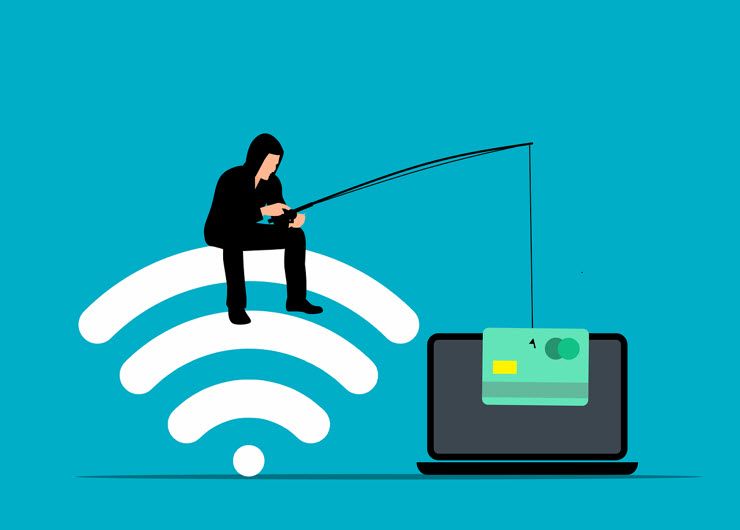
In the age of AI, technology is not the only thing getting advanced; digital frauds are also becoming more sophisticated. So, the priority should be to mitigate the risk before it swells into something uncontrollable, causing you a substantial loss.
As fraudsters work consistently and adopt new techniques to achieve their goal, businesses must also implement effective preventive strategies. Let’s understand the impact of digital fraud and how you can implement online fraud prevention strategies to eliminate attacks proactively.
What is Online Fraud?
Online frauds are different types of digital fraudulent activities conducted by malicious individuals or entities. The primary purpose behind these frauds is to gain unauthorised access to sensitive data, financial assets or personal information.
Below are a few types of online fraud that are commonly encountered:
- Ransomware Attacks
- Phishing
- Credit Card Frauds
- Identity Theft
- Social Engineering Attacks
How Online Fraud Affects Individuals and Businesses?
One of the most substantial losses a digital fraud causes is financial loss. These attacks tend to be so powerful that in just a single hit, you find your business in a severe financial crisis.
To elaborate on the impact of online fraud, PWC conducted an online survey in 2022. As per the survey report, nearly 51% of organisations said they experienced fraud in the past two years. Shockingly, 18% of those companies state a substantial loss of more than $50 million by a single attack.
Moreover, the fallout is not limited to financial loss only. Leaked sensitive information, compromised data or being associated with a cyber-attack can cause you long-term reputational damage.
Also, following a cyber-attack, you may have to face legal penalties, especially when sensitive information or customer data has been compromised. Henceforth, the consequences of online fraud may get way more complicated than we estimate.
What does Online Fraud Prevention Help with?
By implementing a holistic digital fraud prevention strategy, you can achieve the following goals:
- Account Takeover Prevention: An account takeover happens when a fraudster achieves unauthorised access to someone’s online account. A strong password policy with mandatory two-factor authentication and IP geolocation verification can help avert an account takeover.
- Carding Prevention: Multi-layered authentication, monitoring of transaction patterns, and utilisation of advanced machine learning can help prevent the unauthorised use of credit card details.
- DDoS Protection: DDoS (Distributed Denial of Service) attacks are aimed at making a website or an online application unavailable by sending heavy false traffic to it. Implementing traffic filtering solutions and content delivery networks (CDNs) may help with these activities.

Five Most Effective Online Fraud Prevention Strategies
Below are the five most powerful techniques that can be used in 2024 for online fraud prevention.
1. Train Your Employees
Before you implement any fraud prevention strategy, remember that employee training is the key. Most employees fall victim to phishing attacks, reveal confidential data or passwords and sometimes fail to recognise illegal transactions.
For instance, in 2019, Toyota Boshuku Corporation was tricked by an impersonator who pretended to be a business partner. Unknowingly, the company transferred $37 million to fraudulent accounts. Imagine if a big corporation falls victim to these attacks; what impact will it have on small- to medium-sized companies?
Hence, regular training sessions and education programs must be compulsory for employees. By doing so, they will be able to spot any suspicious activity. The best way to conduct training is to tailor it to the employee’s role, level, and expertise. The more customised the training, the better equipped a business will be against attacks.
2. Educate Your Customers
Educating your customers is as essential as training your employees. This education is not only fruitful for the customers but also for your business. The more equipped they are with tools and information, the better decisions they can make.
Here’s what you can educate them about:
- Phishing Recognition: Make your customers aware of how phishing or social engineering schemes operate. This way, they will be able to recognise such potential attacks, and they will abandon such communication immediately.
- Use of Strong Passwords: Educate your customers about creating strong passwords to minimise the risk of online attacks.
- Monitoring of Account Activity: Customers must keep an eye on their account activity and take immediate action if they receive any notification regarding unknown activity.
- Be Cautious with Unsolicited Communication: If you receive a suspicious email or even one that doesn’t seem suspicious, the first line of defence is not to click any link in the email. Secondly, if you are being asked to exchange sensitive information such as passwords or other details on call or email, you must immediately confirm it from a trusted source.
3. Conduct Frequent System Monitoring
Regular monitoring and scheduled audits are essential to ensure smooth business operations. Here are a few critical security updates to consider:
- Ethical Hacking: Also known as penetration test, which is conducted by cyber-security specialists. These experts simulate attacks on the system to examine whether your system is strong enough to withstand potential cyber-attacks.
- Security Policies Review: By constantly reviewing security policies, companies can ensure that all their employees follow the code of conduct and are well aware of their responsibilities.
- Analysis of Third Parties: If you have external providers, such as vendors or suppliers, who have access to your inventory or other data, you must assess the security measures they follow for secure operations.
4. Emphasize Multi-Factor-Authentication
According to Google research, two-factor authentication using an SMS can prevent 76% of targeted phishing attacks, 96% of bulk phishing attacks, and 100% of bot attacks.
Multi-factor authentication requires more details, such as email code verification, a direct call or an SMS code, before proceeding with a log-in. This way, it adds an additional defence layer to account access, making it hard for attackers to gain unauthorised access.
5. Invest in Online Fraud Prevention Software
Modern online fraud prevention software is enabled with state-of-the-art technologies such as machine learning and artificial intelligence. These technologies can detect cyber-attack attempts in real time.
Data analytics empowered with AI and ML is strong enough to analyse unusual behaviour patterns and other anomalies that signal potential fraud. This way, an unusual activity is immediately flagged as suspicious, stopping the potential threat in its tracks.
Elevate Your Fraud Prevention Strategies with Cyberlutions®
You need expert assistance if you want your organisation to be ahead of fraudsters. Online intelligence and investigation specialists at Cyberlutions® use cutting-edge technology to detect, prevent, and combat several types of online fraud. Besides, we also help our clients tackle the complexities of identity theft as well as reputational damage.
By collaborating with experts at Cyberlutions®, you can prevent potential phishing, ransomware, and BEC attacks. Our PrivyCheck™ Identity Theft Prevention team provides a detailed analysis of your online presence and informs you about your system's vulnerabilities.
Contact us today to schedule a Free Consultation and we’ll help you achieve complete peace of mind with our professional intelligence services.
Sources:
https://alicebiometrics.com/en/5-ways-to-prevent-digital-fraud-2023/
https://www.digitalelement.com/resources/blog/digital-fraud/
https://www.centralbank.net/personal/security/security-news/seven-tips-to-avoid-online-fraud/
https://www.tookitaki.com/compliance-hub/cyber-fraud-real-life-examples-and-prevention-strategies
https://fingerprint.com/blog/fraud-prevention-strategies/
https://economictimes.indiatimes.com/wealth/personal-finance-news/7-measures-you-should-know
Be informed. Stay updated.
Stay ahead with the
HermesHerald newsletter!
Immerse yourself in exclusive insights and crucial updates. Ensure you're always in the know!
Contact Us
Thank you for signing up to HermesHerald! We're excited to keep you updated with the latest insights and information. Stay tuned! 🌟
Please try again later.
Contact Us
Thank you for signing up to HermesHerald! We're excited to keep you updated with the latest insights and information. Stay tuned! 🌟
Please try again later.
Contact Us
Thank you for signing up to HermesHerald! We're excited to keep you updated with the latest insights and information. Stay tuned! 🌟
Please try again later.
With over 40 years combined experience, we conduct professional investigation and intelligence services for local and international clients in the public, private, and law enforcement sectors.
Website Privacy Policy & GDPR | Operational Policy
BROWSE WEBSITE
CONTACT INFO
Phone:
1800 889 713
Email: help@cyberlutions.com.au
Location:
Suite 88, 30 Denison St, Bondi Junction NSW 2022
Location:
Unit 4, 95 Main Rd, George Town TAS 7253
BUSINESS HOURS
- Mon - Fri
- -
- Sat - Sun
- Closed
With over 40 years combined experience, we conduct professional investigation and intelligence services for local and international clients in the public, private, and law enforcement sectors.
BROWSE WEBSITE
CONTACT INFO
Phone: 1800 889 713
Email: help@cyberlutions.com.au
Location: Suite 88, 30 Denison St, Bondi Junction NSW 2022
Location: Unit 4, 95 Main Rd, George Town TAS 7253
BUSINESS HOURS
- Mon - Fri
- -
- Sat - Sun
- Closed
Copyright CYBERLUTIONS, All Rights Reserved
Content, including images, displayed on this website is protected by copyright laws. Downloading, republication, retransmission or reproduction of content on this website is strictly prohibited. Website Privacy Policy & GDPR | Operational Policy | Cookie Policy








